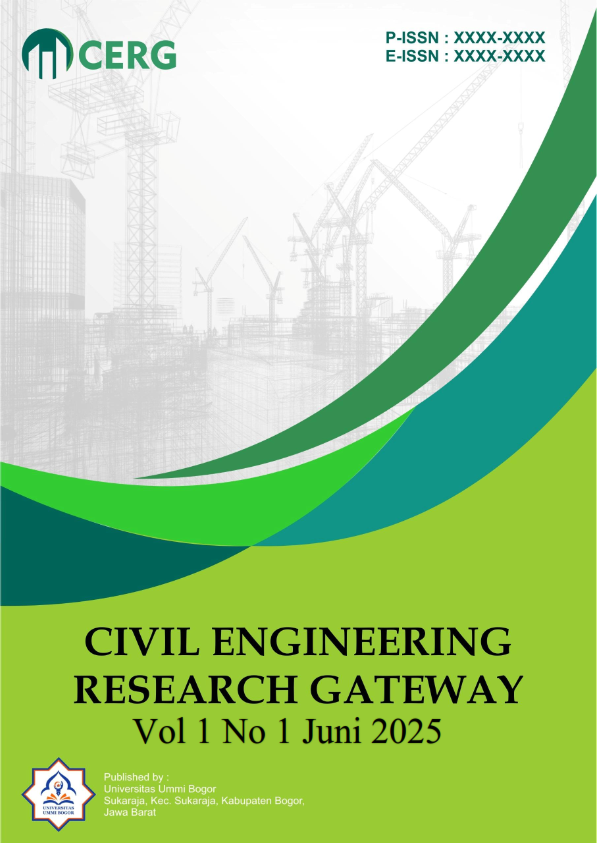Resilient and Sustainable Civil Engineering Solutions for Future Infrastructure Challenges
Keywords:
Civil Engineering, Future Infrastructure, Resilience, Smart Technologies, SustainabilityAbstract
The increasing scale and complexity of global infrastructure pose pressing challenges that require innovative and adaptive responses from civil engineering. Rapid urbanization, population growth, and the intensifying effects of climate change are placing immense pressure on existing systems, exposing their vulnerability to natural disasters, resource scarcity, and technological disruptions. To address these issues, the present study investigates resilient and sustainable civil engineering solutions designed to meet future infrastructure challenges. The objective is to identify approaches that not only ensure structural reliability and durability but also minimize environmental impact and enhance long-term adaptability. A mixed-methods design was employed, combining systematic literature review with case study analysis of innovative infrastructure projects across different regions. The results demonstrate that integrating advanced digital technologies such as Building Information Modeling (BIM), Artificial Intelligence (AI), and the Internet of Things (IoT) strengthens predictive capabilities, optimizes resource allocation, and supports data-driven decision-making. Furthermore, the use of green construction materials, renewable energy systems, and modular construction techniques significantly reduces carbon emissions while increasing project flexibility and scalability. The findings also highlight the importance of adaptive design strategies that account for uncertainties, enabling infrastructure systems to absorb shocks and recover rapidly from disturbances. Beyond technical aspects, the study underscores the crucial role of leadership, regulatory frameworks, and cross-sector collaboration in accelerating the adoption of resilient and sustainable practices. The implications suggest that civil engineering must embrace a holistic paradigm that balances technological innovation, ecological responsibility, and social equity. By doing so, infrastructure development can contribute to achieving global sustainability targets while preparing societies to face future uncertainties with confidence and resilience.
References
Asian Development Bank (ADB). (2021). Asian infrastructure needs report. ADB Publications.
Bosher, L., Dainty, A., Carrillo, P., Glass, J., & Price, A. (2007). Integrating disaster risk management into construction: A UK perspective. Building Research & Information, 35(2), 163–177. https://doi.org/10.1080/09613210600979848
Byrne, B. M. (2016). Structural equation modeling with AMOS: Basic concepts, applications, and programming (3rd ed.). Routledge.
Creswell, J. W., & Creswell, J. D. (2018). Research design: Qualitative, quantitative, and mixed methods approaches (5th ed.). SAGE Publications.
Darko, A., & Chan, A. P. C. (2018). Review of barriers to green building adoption. Sustainable Development, 26(6), 694–707. https://doi.org/10.1002/sd.1741
Durdyev, S., Ismail, S., & Kandymov, N. (2018). Structural equation model of the factors affecting construction labor productivity. Journal of Construction Engineering and Management, 144(4), 04018007. https://doi.org/10.1061/(ASCE)CO.1943-7862.0001452
Goh, C. S., & Loosemore, M. (2017). The impacts of industrialization on construction subcontractors: A resource based view. International Journal of Project Management, 35(5), 797–807. https://doi.org/10.1016/j.ijproman.2017.02.016
Gujarati, D. N., & Porter, D. C. (2009). Basic econometrics (5th ed.). McGraw-Hill.
Hair, J. F., Black, W. C., Babin, B. J., & Anderson, R. E. (2019). Multivariate data analysis (8th ed.). Cengage Learning.
Holling, C. S. (1973). Resilience and stability of ecological systems. Annual Review of Ecology and Systematics, 4(1), 1–23. https://doi.org/10.1146/annurev.es.04.110173.000245
Hu, L. T., & Bentler, P. M. (1999). Cutoff criteria for fit indexes in covariance structure analysis: Conventional criteria versus new alternatives. Structural Equation Modeling, 6(1), 1–55. https://doi.org/10.1080/10705519909540118
Marzouk, M., & Othman, A. (2017). Planning utility infrastructure requirements for smart cities using BIM and GIS. Automation in Construction, 83, 220–234. https://doi.org/10.1016/j.autcon.2017.08.010
Nunnally, J. C., & Bernstein, I. H. (1994). Psychometric theory (3rd ed.). McGraw-Hill.
Opoku, A., & Ahmed, V. (2016). Leadership and sustainability in the built environment. Routledge.
Paton, D., & Buergelt, P. T. (2019). Risk, transformation and adaptation: Ideas for reframing approaches to disaster risk reduction. International Journal of Environmental Research and Public Health, 16(14), 2594. https://doi.org/10.3390/ijerph16142594
Rockström, J., Gupta, J., Lenton, T. M., Qin, D., Lade, S. J., Abrams, J. F., ... & Schellnhuber, H. J. (2020). Identifying a safe and just corridor for people and the planet. Earth’s Future, 8(10), e2020EF001866. https://doi.org/10.1029/2020EF001866
Volk, R., Stengel, J., & Schultmann, F. (2019). Building Information Modeling (BIM) for existing buildings—Literature review and future needs. Automation in Construction, 38, 109–127. https://doi.org/10.1016/j.autcon.2013.10.023
WCED (World Commission on Environment and Development). (1987). Our common future. Oxford University Press.
Downloads
Published
Issue
Section
License
Copyright (c) 2025 Civil Engineering Research Gateway

This work is licensed under a Creative Commons Attribution-ShareAlike 4.0 International License.



